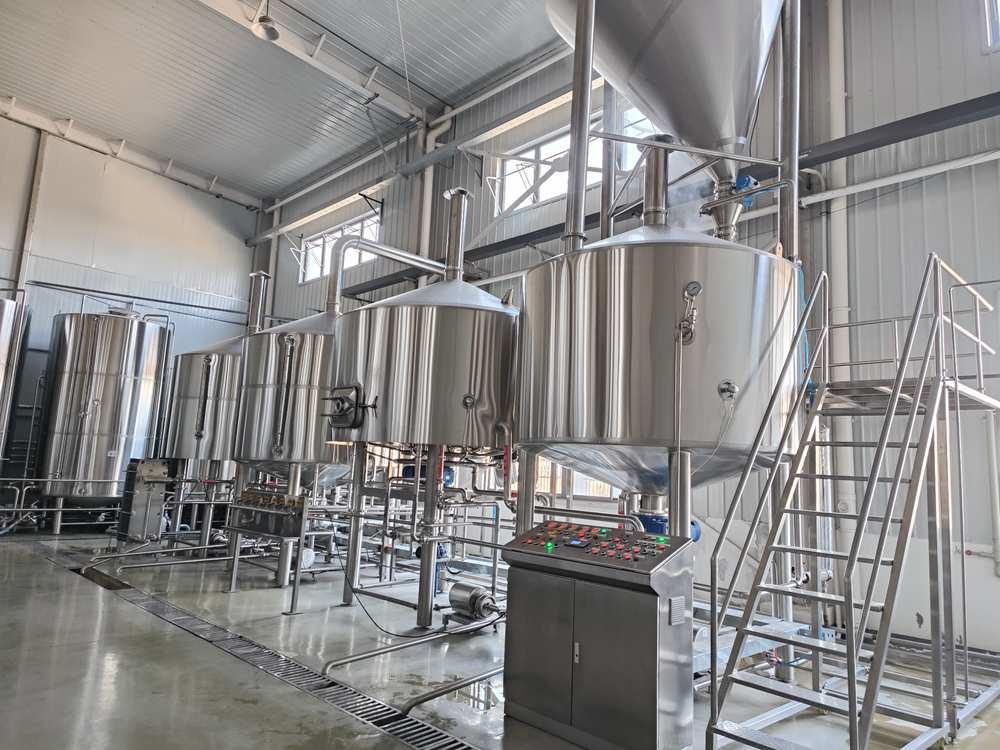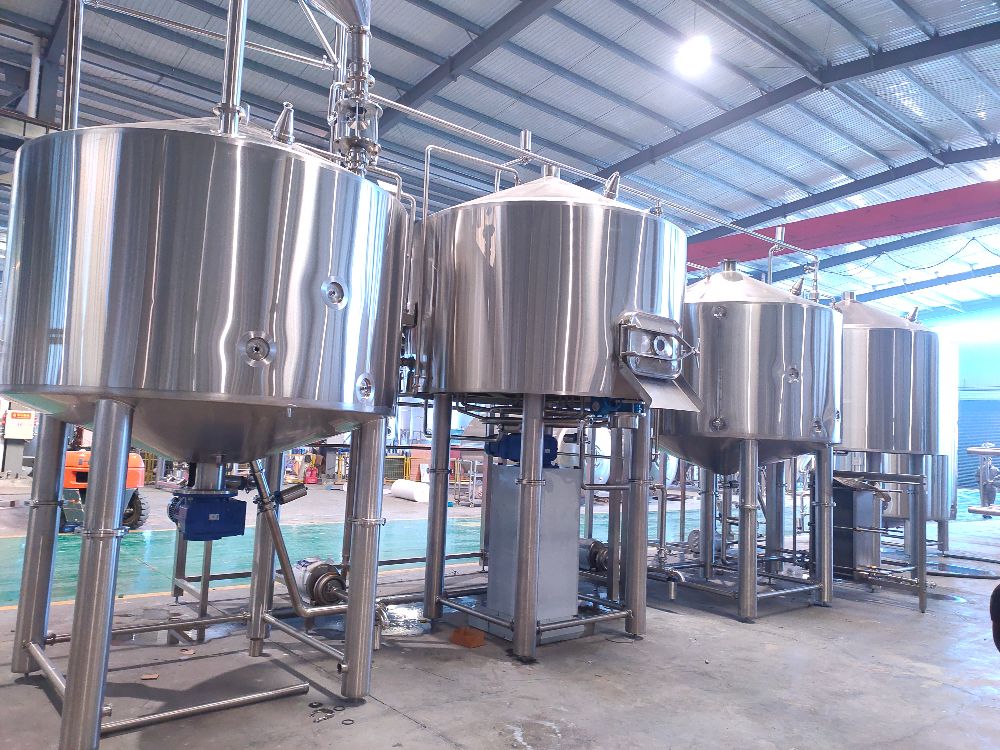How to control fermentation process to produce non-alcoholic beer?
- Sep 28, 2023
- 84
- tiantai
In last article, we discussed whether beer brewery equipment can be used for brewing non-alcoholic beer and also introduced several key points when producing non-alcoholic beer. In these key points, beer fermentation process happened in beer fermentation tank is also a crucial step to manufacture non-alcoholic beer. So, how to control beer fermentation process to produce non-alcoholic beer?
To control the fermentation process and produce non-alcoholic beer, you need to take specific measures to minimize alcohol production. Here are some key steps to achieve this:
Yeast Selection: Choose a yeast strain that produces minimal alcohol. Some yeast strains are known for their low alcohol tolerance and can be used to limit alcohol production. Alternatively, you can use yeast strains that have been genetically modified or bred specifically for non-alcoholic beer production.
Fermentation Temperature: Control the fermentation temperature to discourage yeast activity. Lower fermentation temperatures typically result in less alcohol production. Aim for temperatures on the lower end of the yeast's optimal range.
Yeast Nutrient Management: Limit the availability of yeast nutrients such as nitrogen and minerals. This can slow down yeast metabolism and reduce alcohol production. Adjust the nutrient levels in the wort to be less favorable for yeast growth.
Monitoring Gravity: Regularly measure the specific gravity of the fermenting beer to track the progress of fermentation. Once the gravity stabilizes at a specific level, it indicates that most of the sugars have been consumed, and alcohol production has ceased.

Deactivation of Yeast: If you use regular brewing yeast that produces alcohol, consider pasteurization to deactivate the yeast once the desired level of fermentation is achieved. Pasteurization involves heating the beer to a temperature that kills the yeast cells (usually around 140°F or 60°C) while preserving the desired flavors.
Carbonation: Be cautious with carbonation. The fermentation of additional sugars for carbonation can potentially increase alcohol content. Instead, use methods like forced carbonation or natural carbonation without additional sugar.
Control Oxygen Exposure: Minimize oxygen exposure during fermentation, as oxygen can promote yeast activity and increase alcohol production. Ensure a well-sealed fermentation vessel and avoid unnecessary agitation.
Monitoring Alcohol Content: Continuously monitor the alcohol content of the beer throughout the fermentation process to ensure it remains below the desired level for non-alcoholic beer.
Recipe Adjustments: Make adjustments to the recipe, such as using less fermentable sugars or using adjuncts that are less prone to fermentation.
Quality Control: Regularly taste and analyze the beer during and after fermentation to ensure it meets flavor and quality standards.
It's important to note that the definition of "non-alcoholic" beer can vary by region, and some countries have specific legal limits for alcohol content in such beverages. Therefore, ensure that your production process complies with local regulations and standards for non-alcoholic beverages.
So, after looking through above description, have you already figured out the production of non-alcoholic beer? NO? So, contact Nicole now to discuss further and customize your beer brewery system and beer fermenter to start your production trip. Cheers!
Edited by Nicole
Sales manager | Tiantai beer equipment
Email: [email protected]
To control the fermentation process and produce non-alcoholic beer, you need to take specific measures to minimize alcohol production. Here are some key steps to achieve this:
Yeast Selection: Choose a yeast strain that produces minimal alcohol. Some yeast strains are known for their low alcohol tolerance and can be used to limit alcohol production. Alternatively, you can use yeast strains that have been genetically modified or bred specifically for non-alcoholic beer production.
Fermentation Temperature: Control the fermentation temperature to discourage yeast activity. Lower fermentation temperatures typically result in less alcohol production. Aim for temperatures on the lower end of the yeast's optimal range.
Yeast Nutrient Management: Limit the availability of yeast nutrients such as nitrogen and minerals. This can slow down yeast metabolism and reduce alcohol production. Adjust the nutrient levels in the wort to be less favorable for yeast growth.
Monitoring Gravity: Regularly measure the specific gravity of the fermenting beer to track the progress of fermentation. Once the gravity stabilizes at a specific level, it indicates that most of the sugars have been consumed, and alcohol production has ceased.

Deactivation of Yeast: If you use regular brewing yeast that produces alcohol, consider pasteurization to deactivate the yeast once the desired level of fermentation is achieved. Pasteurization involves heating the beer to a temperature that kills the yeast cells (usually around 140°F or 60°C) while preserving the desired flavors.
Carbonation: Be cautious with carbonation. The fermentation of additional sugars for carbonation can potentially increase alcohol content. Instead, use methods like forced carbonation or natural carbonation without additional sugar.
Control Oxygen Exposure: Minimize oxygen exposure during fermentation, as oxygen can promote yeast activity and increase alcohol production. Ensure a well-sealed fermentation vessel and avoid unnecessary agitation.
Monitoring Alcohol Content: Continuously monitor the alcohol content of the beer throughout the fermentation process to ensure it remains below the desired level for non-alcoholic beer.
Recipe Adjustments: Make adjustments to the recipe, such as using less fermentable sugars or using adjuncts that are less prone to fermentation.
Quality Control: Regularly taste and analyze the beer during and after fermentation to ensure it meets flavor and quality standards.
It's important to note that the definition of "non-alcoholic" beer can vary by region, and some countries have specific legal limits for alcohol content in such beverages. Therefore, ensure that your production process complies with local regulations and standards for non-alcoholic beverages.
So, after looking through above description, have you already figured out the production of non-alcoholic beer? NO? So, contact Nicole now to discuss further and customize your beer brewery system and beer fermenter to start your production trip. Cheers!
Edited by Nicole
Sales manager | Tiantai beer equipment
Email: [email protected]

.jpg)


